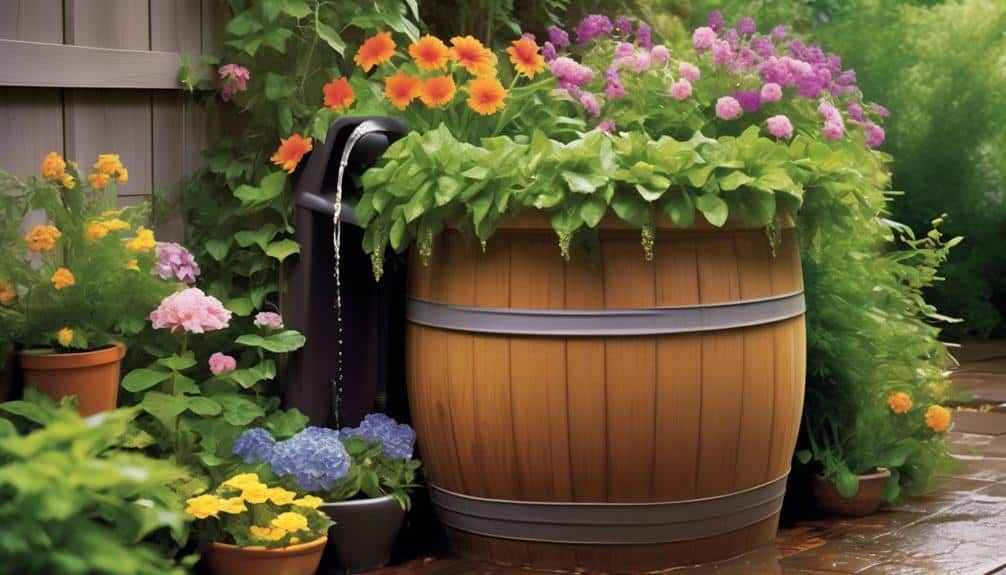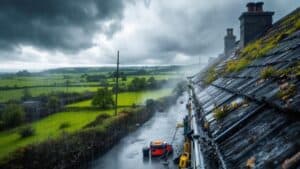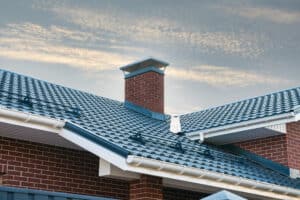Are you looking for a way to be more environmentally friendly and save money?
Rain barrels are a great option. These simple systems collect rainwater for use in your garden or home. They can help you conserve water, reduce your utility bills, and provide your plants with a natural water source.
What are rain barrels and how do they work? We’ll also discuss how to install one.
Key Takeaways
- Rain barrels are a straightforward and eco-friendly solution for water conservation. They collect and store rainwater from your roof that can be used for various household purposes.
- If you’re looking to reduce your water bill and give your plants a more natural hydration option, rain barrels are an excellent choice. They’re also a step towards sustainable living.
- Gain insights into the workings of rain barrels and learn their installation process, enhancing water conservation efforts at home.
What Is the Purpose of Rain Barrels?
Imagine a container collecting rainwater from your roof. Instead of letting it flow away, a rain barrel stores it for future use. This simple yet effective tool is becoming increasingly popular as people seek more sustainable ways to conserve water.
Why use a rain barrel? It’s a great way to reduce your water consumption, especially during dry periods. By collecting and storing rainwater, you’re decreasing your reliance on municipal water supplies. This is a positive step towards more sustainable water use.
Rain barrels also provide an alternative water source. You can use this collected rainwater for various outdoor and indoor activities, such as watering your lawn, garden, or houseplants. It’s a smart and environmentally friendly way to keep your green spaces thriving.
Furthermore, rain barrels contribute to rainwater harvesting, a practice that involves capturing and storing rainwater for future use. By using rain barrels, we can all play a part in conserving water and reducing our environmental impact.
In essence, rain barrels offer a sustainable, reliable, and environmentally friendly water source.
What are the Benefits of Rain Barrels?
Rain barrels offer numerous benefits for sustainable water management.
- Save money: By collecting rainwater for household tasks, you can significantly reduce your water bills.
- Conserve water: Rain barrels provide a reliable water source during droughts, reducing pressure on municipal water supplies and conserving natural resources.
- Manage stormwater: Rain barrels help prevent harmful pollutants from entering natural bodies of water, protecting the environment.
- Prevent floods and protect soil: By reducing the amount of rainwater in your yard, rain barrels can help prevent flooding, soil erosion, and damage to your home’s foundation.
- Promote plant growth: Rainwater collected in barrels is free of chemicals and can help plants grow healthier.
To maximize the benefits of rain barrels, proper maintenance is essential. A good purchasing guide can help you select a high-quality barrel. Regularly cleaning your barrel, checking for leaks, and protecting it from freezing temperatures are crucial steps.
By incorporating rain barrels into your water management strategy and maintaining them properly, you can contribute to a greener and more sustainable lifestyle.
How Does Rain Barrels Work?
Rain barrels are a simple and effective way to collect and store rainwater. The rainwater flows from your roof into the barrel, which can hold between 40-60 gallons of water. When you need to use the water, you can access it through a spigot at the bottom of the barrel.
To keep your rain barrel in good condition, it’s important to regularly check for leaks, clean it out, and ensure the overflow valve is working properly. You can also connect multiple barrels together to increase your water storage capacity.
It starts with collecting rainwater from the roof and directing it into the barrel. Most rain barrels can store between 40-60 gallons of water. As the rainwater trickles down the gutter and the downspout, the barrel gradually fills up.
When you need to use the stored water, there’s a spigot at the bottom of the barrel. You can simply turn it on to water your plants or hook up a drip irrigation system. But remember, like all things, rain barrels need some TLC to keep them in good shape.
That means regular check-ups for leaks, cleaning out any rubbish, and making sure the overflow valve is doing its job.
And if you’re thinking, ‘Hey, I need more water than that,’ you’re in luck! You can link your rain barrel to a second one, increasing your water collection.
How to Set up a Rain Barrel System?
Thinking about setting up a rain barrel system at your place? That’s a brilliant idea! Let’s chat about how to make that happen, while also touching on some important aspects like functionality, uses, legalities, pros and cons, the different kinds available, and how to keep them clean.
The process of setting up a rain barrel system isn’t too complex, and if you follow these steps, you should be good to go:
Installing your Rain Barrel
- Start by finding the right spot for your rain barrel. Ideally, it should be near a downspout and on stable ground.
- Next, install a rain barrel diverter. This nifty device will help guide water from your downspout right into your barrel. Make sure the connection is secure to avoid any water leakage.
Maintaining your Rain Barrel
- Keep an eye on your rain barrel. Look out for any signs of damage or leaks. If you notice anything amiss, take action immediately by repairing or replacing the affected parts.
- Also, remember to clean your rain barrel at least once a year. This will help prevent debris buildup and the growth of algae or bacteria.
Follow these steps, and you’ll have a fully functional rain barrel system in no time!
Frequently Asked Questions
What Is a Rain Barrel Used For?
You know, rain barrels are pretty handy. They’re basically big containers that catch and store rainwater. What’s that good for, you might ask? Well, there’s a bunch of uses. For instance, you can use the collected water to quench your garden’s thirst or give your car a good rinse.
The good thing about this is, it’s all about saving water. So, if you’re eco-conscious and always looking to do your bit for the environment, this is a great way to conserve water. Plus, it can help you cut down on your water bill – now who wouldn’t love that? And, you’re not using up as much water from the city’s supply.
All in all, a rain barrel is a pretty neat tool to have around. It’s a win for you, a win for your plants, and a win for the environment.
What Are the Disadvantages of a Rain Barrel?
There are a few downsides to using rain barrels that you might want to consider. For starters, during dry seasons, it can be a real challenge to fill these barrels up. Also, there’s the risk of the collected water getting contaminated. If you use a lot of water, a rain barrel might not be able to provide enough to meet your needs. And don’t forget about the threat of freezing in colder climates – these barrels aren’t immune to the cold! Lastly, if you’ve got a wooden barrel, you can expect to be doing a lot more maintenance than with other types.
Is Collecting Rainwater Illegal in Ireland?
In Ireland, there’s no law against gathering up some rainwater. It’s a smart move for many reasons, such as conserving water, reducing runoff, and supplying your garden with free water. You can catch the rain in a variety of ways, like using rain barrels or cisterns.
What Happens When a Rain Barrel Is Full?
So, what exactly happens when a rain barrel is chock-full? Well, there’s a clever mechanism in place, called an overflow valve, that steps in to handle any surplus water. This feature makes sure the extra water is safely funnelled away, saving the barrel from any potential harm. Plus, it’s a great way to make the most of water storage and ease the burden on our city’s water supply.






